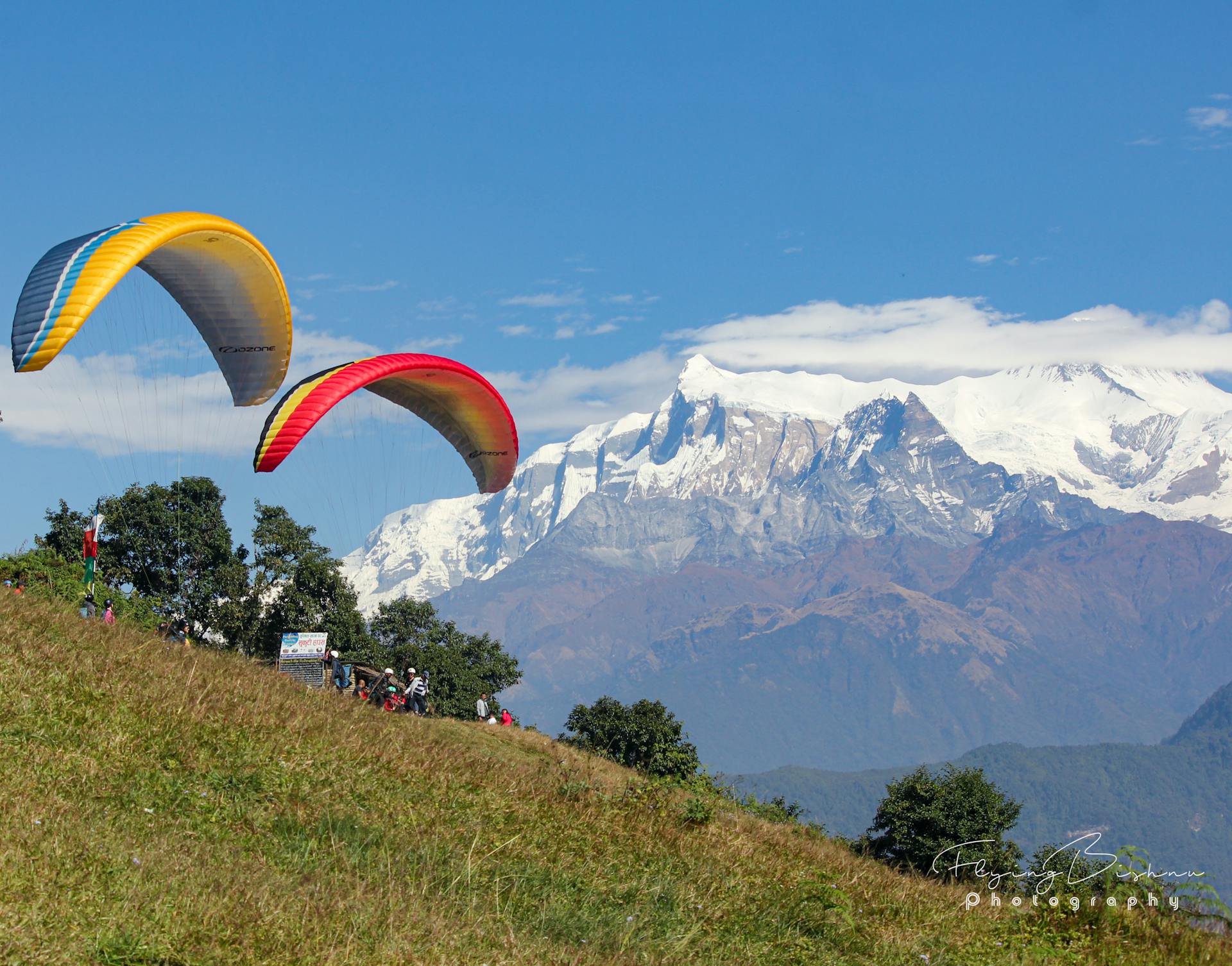- Published on
Pokhara is the third largest city in Nepal, renowned for its stunning natural beauty and as a gateway to the Annapurna Circuit, a popular trekking trail in the Himalayas. Situated about 200 kilometers west of the capital, Kathmandu, Pokhara sits at an altitude of approximately 827 meters above sea level, making it much lower than many other major cities in the country. Paragliding in Pokhara is one of the popular adventure sports among the visitors.
The city is nestled beside the shimmering Phewa Lake, the second largest lake in Nepal, which reflects the image of the snow-capped Machhapuchhre peak and other mountain ranges. Its serene environment and picturesque landscape have made it a hotspot for tourists, both domestic and international.
Pokhara Paragliding Facts
Activity | Paragliding |
Operating Hours | Early Flight: 09:00 AM Late Flight: 01:00 PM |
Age Limit | Minimum: 5 Years Maximum: Not Applicable |
Weight Requirement | Minimum: 25 KG Maximum: 90 KG |
Best Months | September to December February to May |
Duration | Short: 20 – 30 Minutes Extended: 40 – 60 Minutes |
Major Attractions | Valley View Lakes View Mountains View |
Pokhara is also famous for its adventure and extreme sports tourism. It is considered the tourism capital of Nepal, offering activities like boating, hiking, pony rides, paragliding, bungee jumping, white-water rafting, and ultra-light aircraft rides. Among these, paragliding is the most popular, thanks to the ideal wind conditions, stable thermals, and the breathtaking panoramic views of the Himalayan range.
The city also holds cultural significance, with a mix of Hindu and Buddhist heritage. It is home to several medieval era temples, old bazaars, and culturally rich Newar communities. The annual festivities and events that take place in Pokhara draw crowds from all around.
Pokhara is a significant city in Nepal for its contribution to tourism, its cultural heritage, and its unique offerings like paragliding which provide unforgettable experiences to visitors.
What is Paragliding?
Paragliding is a recreational and competitive adventure sport that involves flying paragliders: lightweight, free-flying, foot-launched glider aircraft with no rigid primary structure. The pilot is seated in a harness suspended below a fabric wing, whose shape is formed by the pressure of air entering vents in the front of the wing.
Unlike hang gliders which have a rigid frame to maintain the shape of the wing, paragliders are shaped by the flow of air over the surface of the wing in conjunction with lines that run from different sections of the wing to the harness. The flexible nature of the paraglider wing means it can be packed into a small space and carried in a backpack, making it very portable and easy to transport compared to other forms of flight.
Paragliding flights can last many hours and cover hundreds of kilometers, although flights of one to two hours and covering some tens of kilometers are more typical. Pilots steer using brake toggles which change the shape of the rear edge of the wing.

A key aspect of paragliding is finding rising air to provide lift. This can come from thermals (columns of warm, rising air), ridge lift (caused by wind being deflected by a slope), or convergence zones (where different air masses meet and are forced upwards). Some paragliders also use small engines (‘paramotors’) to extend their flight.
Safety is an important consideration in paragliding, and pilots use a variety of equipment such as helmets, reserve parachutes, and GPS units for navigation and tracking. It is a sport that requires training and skill, but for those who undertake it, paragliding offers an exhilarating way to see the world from a whole new perspective.
- Discover the exhilarating experience of paragliding in Pokhara, Nepal. Learn about the stunning views, safety measures, and tips for an unforgettable adventure.
- Published on
Discover the exhilarating experience of paragliding in Pokhara, Nepal. Learn about the stunning views, safety measures, and tips for an unforgettable adventure.